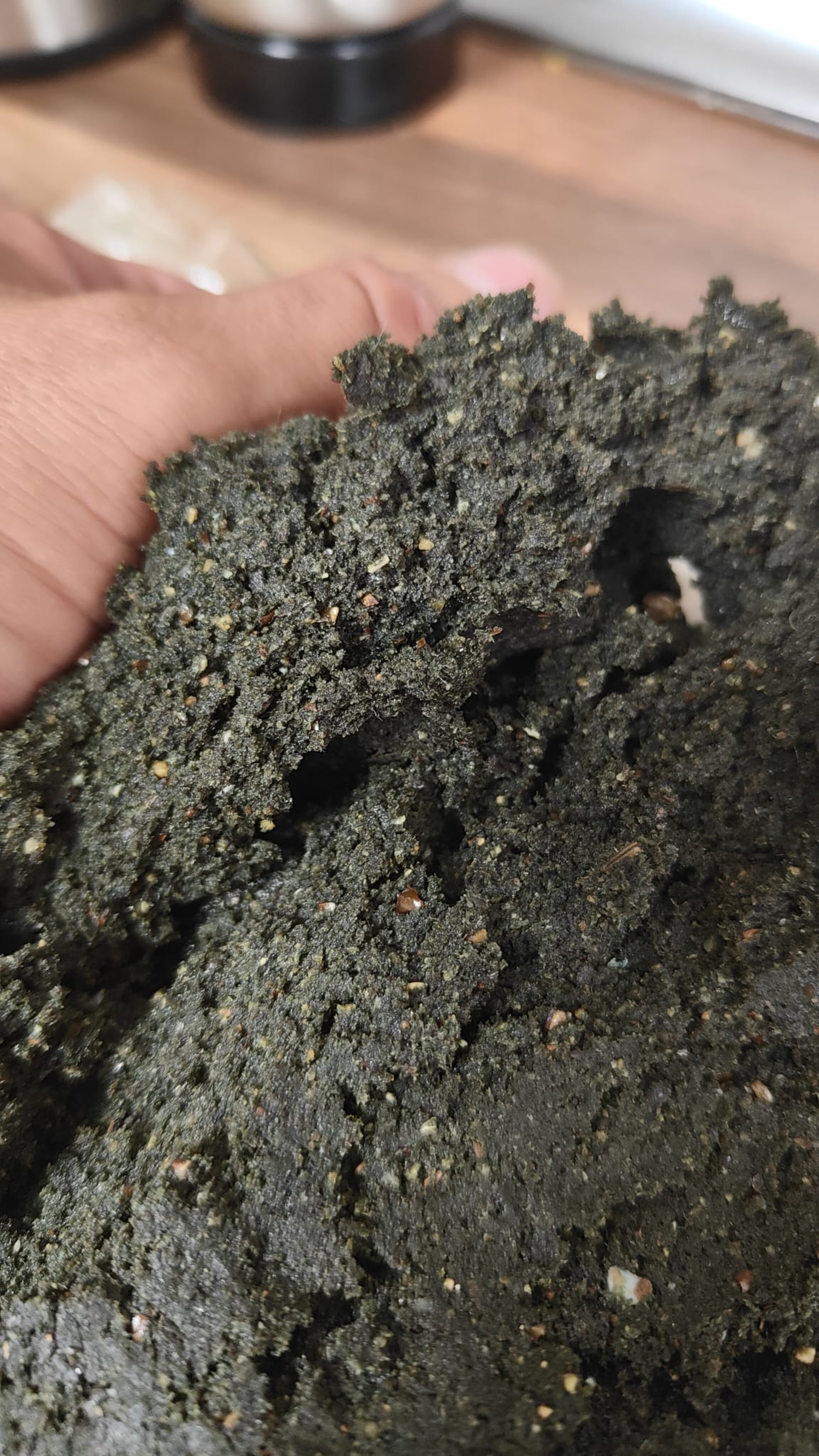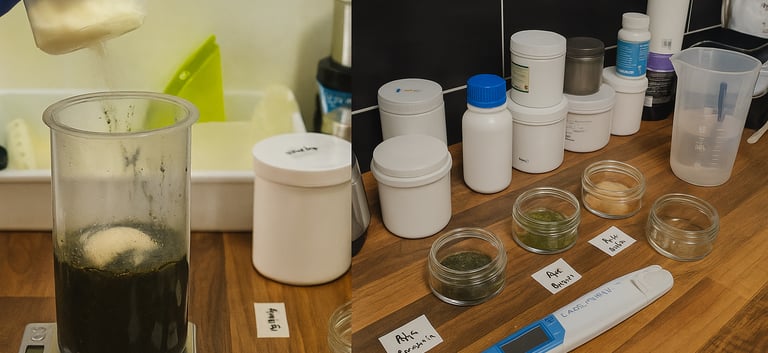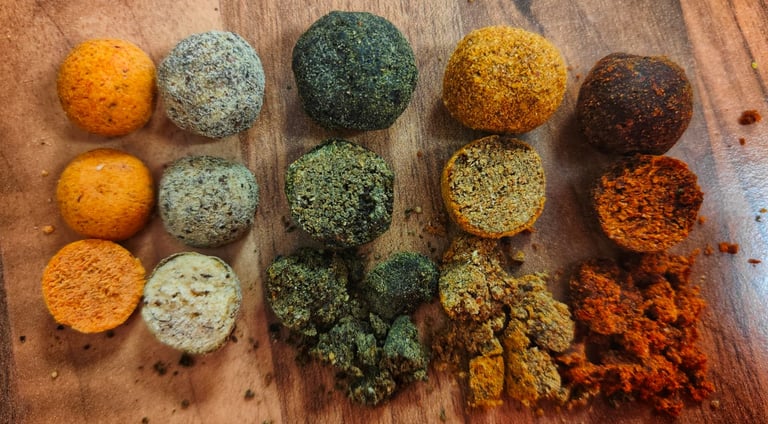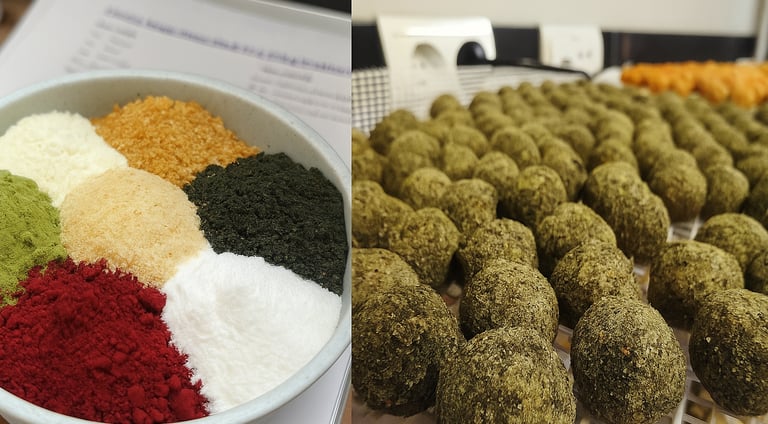
Trending Ingredients: How They Work, Truth vs. Marketing
In this article, we take a close look at the most commonly used additives—their real function, how to identify honest formulations, and the warning signs of a bait designed more to sell than to catch fish.
FORMULACIÓN CIENCIA DEL CEBO


🍒 Trending Ingredients, the “Super Ingredients”: What They Are, How They Work, and How Much Truth There Really Is
❓ Introduction: Is Everything That Shines Truly Effective?
In the world of carpfishing, bold claims about certain trending ingredients are everywhere. Strong-sounding terms are used to grab the attention of the average angler—often without technical knowledge—promising miraculous results with compounds like hydrolysates, betaine, or amino acids.
But a good bait doesn't depend on flashy names alone. The key lies in a solid base structure, controlled porosity, and a coherent combination of ingredients. Many of these technical compounds only work in very low doses and require precise application.
This article breaks down these so-called “super ingredients,” explaining what they are, how they actually function, and how much of what is said about them is real—or just marketing.
🧪 Key Ingredients: What They Are, How They Work, and When They’re Used Properly
💧 Hydrolysates
A hydrolysate is a "pre-digested" protein, made up of small fragments that dissolve quickly in water. That’s why they offer fast attraction and are especially useful in instant baits or in cold water conditions.
⚠️ But be careful: when a brand claims their bait contains 30%, 50%, or more hydrolysates, they’re most likely exaggerating. A boilie with that much would literally fall apart in the water. Pure marketing.
🧁 To understand it better: imagine trying to bake a cookie using only sugar and honey. While both are sweet and appealing, you can't form a solid, stable dough. The same goes for hydrolysates—they provide no structure or binding and must be supported by functional base flours.
🥩 Proteins: Is More Always Better?
Another common marketing tactic is boasting about “very high protein content.” Many products claim to be “super protein-rich” or “the most protein-packed boilie on the market,” suggesting that more protein equals better bait.
✅ While protein is a key nutrient for fish, its value depends on the type of protein, digestibility, and how well it's balanced with other nutrients. More doesn’t necessarily mean better. Optimal levels usually range from 25% to 45%, depending on the bait’s purpose and the season.
🌡️ In colder months or low-metabolism periods, fish may need more energy from fats than proteins. In summer, they may benefit more from simple carbs for quick energy.
🧮 Also, many baits don’t actually contain as much protein as they claim. The numbers are often inflated to sound more technical, but balance is more important than a single flashy number.
🧬 Betaine
Betaine helps fish identify food sources. It’s derived from sources like sugar beet or crustaceans and works well in small quantities—typically 0.5% to 1.5%.
🔍 Using more doesn’t mean better attraction. In fact, too much can overwhelm the fish and make them avoid it. Precision is key.
🧫 Free Amino Acids
These are the simplest components of proteins. Fish detect them as clear indicators of real food. Examples include glycine, alanine, and proline.
📏 These are used in concentrations of 0.2% to 1.0%. Exceeding this range doesn't enhance effectiveness and may disrupt the bait’s balance.
🍽️ Practical comparison: it's like adding salt to a dish—just enough improves the flavor, too much ruins it. The same goes for amino acids.
🔥 Butyric Acid and Butyrates
This compound has a strong odor, but fish can detect it from far away. It’s useful in cold water baits or for long-lasting attraction.
⚗️ The pure acid is used in tiny amounts (0.1–0.2%), while the salt form (butyrate) can be used a bit more—up to 1%. Butyrate offers a more stable and progressive release than the pure acid.
🧨 Talk of “supercharged” baits full of this type of attractant is just another marketing exaggeration.
🍯 Sweeteners and Sugars: Panela, Fructose, Sucrose & More
Sugars do more than sweeten—they enhance diffusion and release of attractants into the water. Some also provide energy and improve taste.
🍬 Most common ones include:
Panela (raw cane sugar): a natural sweetener with minerals. Dissolves well and gives quick energy. Well tolerated by fish.
Fructose (fruit sugar): very sweet, highly attractive in small doses. Dissolves easily and improves palatability. In excess or without stabilization, it ferments easily.
Sucrose (table sugar): dissolves quickly, creating a sharp release peak, but doesn’t provide nutrients. Overuse can be unbalanced.
Glucose syrup: very soluble, but harder to digest for fish.
❗ Many believe that “the sweeter, the better,” but that’s not true. Excess sugar creates osmotic peaks—a disruption between water and the fish’s internal fluids.
🔬 Simple comparison: it's like a person drinking overly salty or sugary water. It causes internal discomfort. The same can happen to fish.
🎯 Ideal sweetener content is 3% to 8%. Going over 10% can be counterproductive.
🍍 Flavors and Fruits
A "melon" or "pineapple" scent doesn’t mean there’s real fruit in the bait. Most of the time, these are synthetic aromas. That’s not necessarily bad, but don’t confuse it with natural ingredients.
🍓 Even artisan baits that use real fruit do so in tiny doses, and usually in a processed form (dehydrated, powdered, or preserved). Using fresh fruit directly is not recommended.
🔍 Most industrial baits don’t contain real fruit. At best, they use fruit extracts—or more often, just synthetic aromas designed to attract human buyers with a candy-like intensity. These can sometimes be counterproductive in pressured waters.
🧠 Using These Ingredients Requires Technical Knowledge
Many of these ingredients demand genuine technical knowledge. You need to know not just how much to use, but also how to combine them.
⚖️ Some ingredients work synergistically; others cancel each other out if not combined properly. It’s not just about throwing in a bit of everything and hoping for results.
📉 Their effectiveness also depends on water temperature, turbidity, fishing pressure, or immersion time.
🔍 Honesty and Transparency
Many commercial baits are well formulated and do work. The problem is not always the recipe, but how it's marketed.
📢 It’s common to exaggerate the presence of certain ingredients purely for marketing purposes. Phrases like “hydrolysate-based boilie” sound great but rarely reflect the reality.
📸 Makers who work with real expertise have no problem showing raw ingredients, mixtures, and unrolled doughs. If you only ever see fish photos and polished products, it’s hard to know whether they really manufacture—or just sell clever branding.
✅ Five Keys to Spotting a Well-Formulated Bait
⚖️ Real nutritional balance – It’s not all about protein. A good bait balances protein, fat, and carbs according to seasonal needs.
🔎 Ingredient transparency – If the brand only lists trendy compounds without explaining how or why they’re used, be cautious.
🧱 Solid structural base – The bait must hold together and release attractants progressively.
🧪 Realistic dosages – Ingredients like betaine, hydrolysates, or acids are used in low doses (0.5–2%). Claims of 30% are suspicious.
👀 Visible process – Brands that show how their baits are made demonstrate real knowledge and commitment.
📚 Bibliography & References
This article is based on recognized scientific and technical sources:
Halver, J. E., & Hardy, R. W. (eds.). (2002). Fish Nutrition (3rd ed.). Academic Press.
Research from Aquaculture Nutrition on betaine, amino acids, and organic acids.
Technical manuals from the Aquaculture Research Institute.
Scientific publications on bait formulation and controlled use of fruit, hydrolysates, and sugars.




